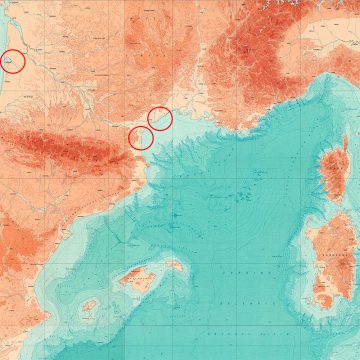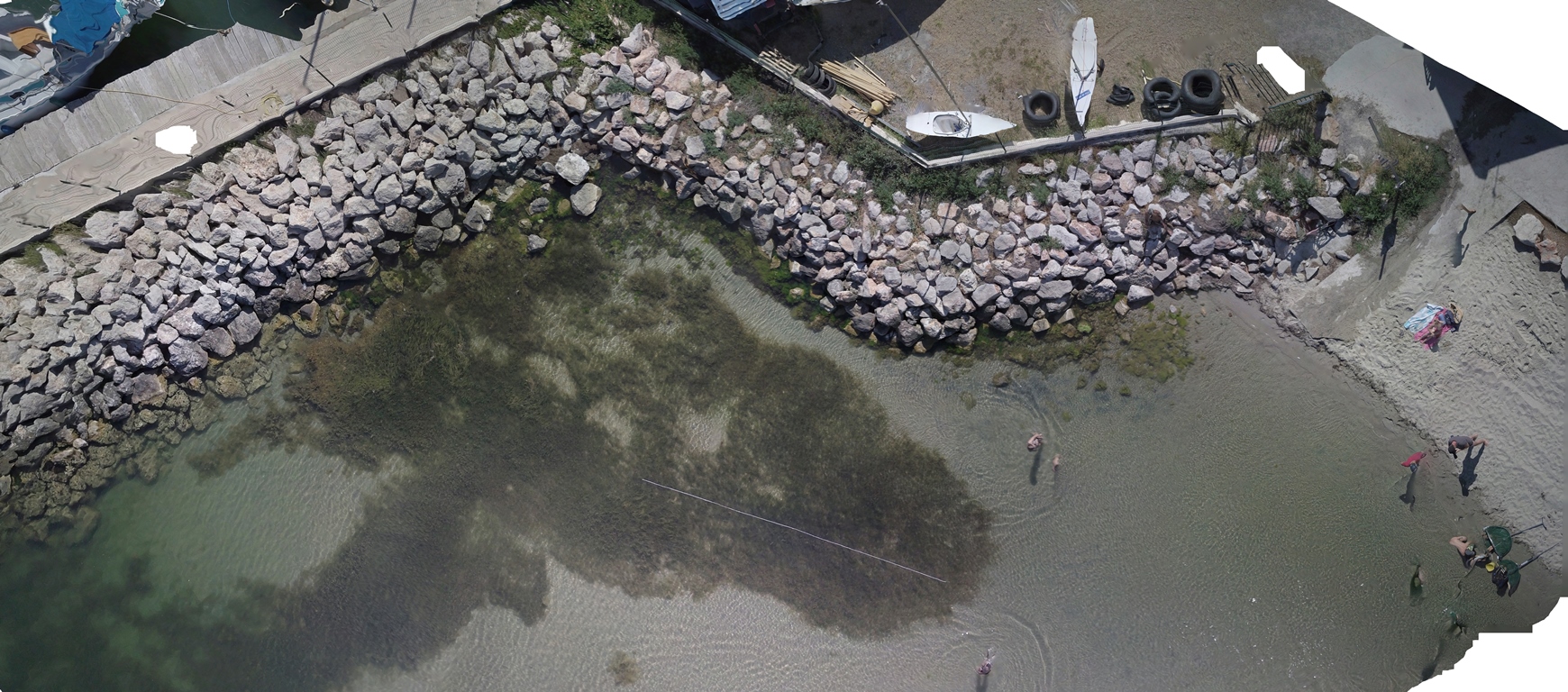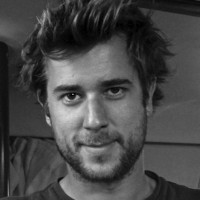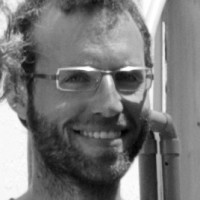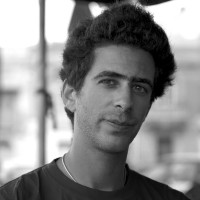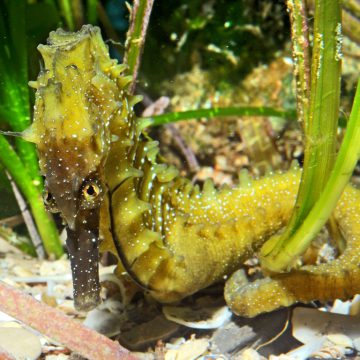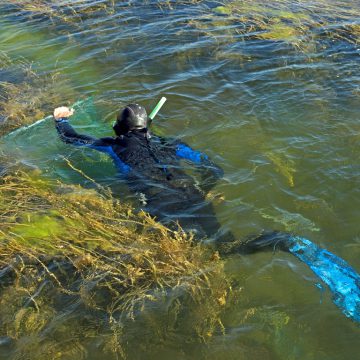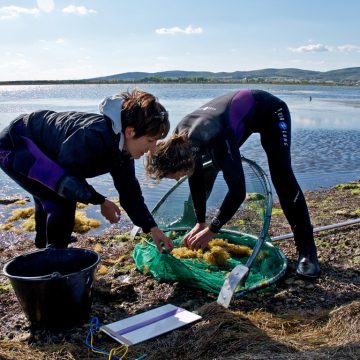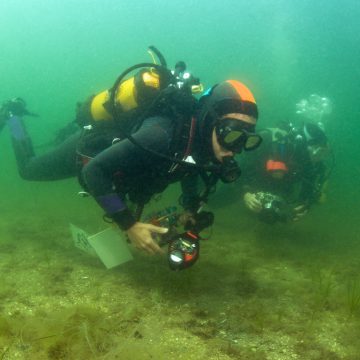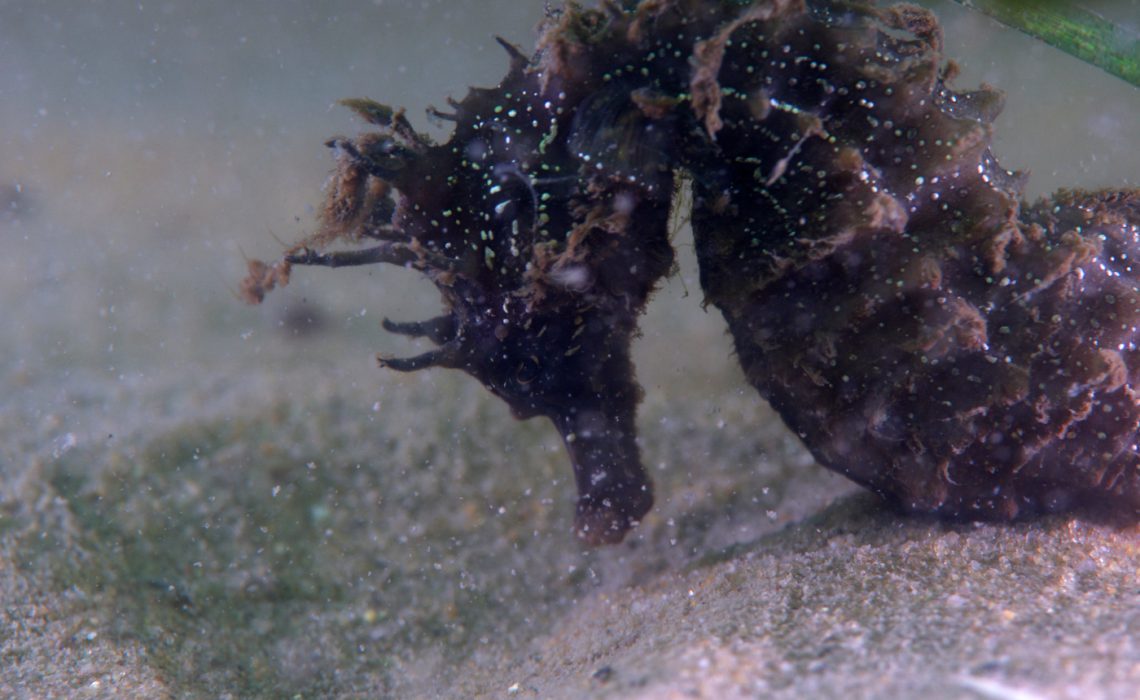
Seahorses of Europe (France, 2017 – 2021)
Hidden in seagrass beds of the Mediterranean and the Atlantic, the seahorses and Syngnathidae of France live a complicated life. Ironically, these icons of the marine world have always been largely ignored by the scientific community. It is urgent to study a family of fish that is today struggling in most places around the world.
Strong currents, cold-water and limited visibility are few of the factors that discourage scuba divers to explore the Arcachon Bay. However, not far from the famous oyster beds, a brave diver may stumble upon the largest population of seahorses in France. Some measure up to 15 centimeters long.
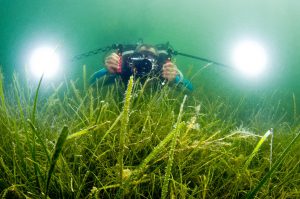 The seahorse remains a mystery for most, as very few scientific studies have been published on this animal. Neither edible nor of economic value, nobody bothered investigating the state of their population.
The seahorse remains a mystery for most, as very few scientific studies have been published on this animal. Neither edible nor of economic value, nobody bothered investigating the state of their population.
The lack of data is such that the International Union for the Conservation of Nature (IUCN), the world’s most comprehensive inventory of the global conservation status of biological species, categorized 29 of the known 50 species of seahorse as ‘Data Deficient’.
For a marine biologist, these little creatures are nonetheless fascinating: they are devoid of scale, their breastplate is made of bone, their eyes are well-developed and move independently from one another, their mouth sucks their preys like a straw or a vacuum, and they use their ability to change color to camouflage or to attract a partner.
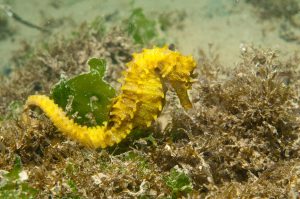 Seahorses are monogamous and sedentary; some will live their entire lives within a few square meters. But, even more intriguing is the fact that the male incubates the hundreds of eggs laid by the female in a pouch until they hatch three weeks later.
Seahorses are monogamous and sedentary; some will live their entire lives within a few square meters. But, even more intriguing is the fact that the male incubates the hundreds of eggs laid by the female in a pouch until they hatch three weeks later.
Twenty years ago, seahorses had almost disappeared altogether from the Bay of Arcachon. For a long time, souvenir shops sold them dehydrated and varnished as lucky charms. For some unknown reason, the population has recovered over the past 10 years.
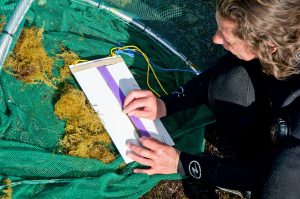 The Octopus Foundation’s objective for this project is to widen our knowledge on these strange yet fascinating animals. Seahorses will not be our only focus, as we will also be studying their family of fish known as the Syngnathidae.
The Octopus Foundation’s objective for this project is to widen our knowledge on these strange yet fascinating animals. Seahorses will not be our only focus, as we will also be studying their family of fish known as the Syngnathidae.
This meticulous work that started some years ago has already yielded surprising results. For example, recent studies on the genetics of seahorses living in the Étang de Thau showed that they are very different from the specimens found in the nearby sea. Although geographically close, they are genetically distant. In fact, these seahorses from the French lagoons are much more similar to species found in England.
In order to present an extended geography of these French species, we planned scientific studies in several seahorse’s hotspots, such as the Étang de Thau, the Étang de Leucate, the Gulf of Morbihan and of course the Arcachon Bay.
Support to the Peau-Bleue association and their SYNTESE scientific program
To what extent are the Syngnathidae a witness of the health of their environment?
To answer this critical question, the Octopus Foundation decided to accompany the actions of French biologist Patrick Louisy and his association, Peau-Bleue.
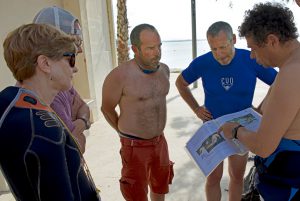 Based in Agde, on the shores of the Étang de Thau, it’s one of the only French organization to study the species of seahorses and more generally the family of Syngnathidae.
Based in Agde, on the shores of the Étang de Thau, it’s one of the only French organization to study the species of seahorses and more generally the family of Syngnathidae.
During its first ten years of existence, the Peau-Bleue association gathered data in order to better understand these animals and their fragility. Now, through their research program, the aim is to document the role they play in their delicate ecosystem. The French team believes that “to better protect, we must first understand”.
The SYNTESE program (short in French for “Syngnathidae, witness for the health of their environment”), will focus on the precise and important question: are these animals an indicator of the health of their environment? They live in specific areas, mainly seagrass beds found in various lagoons of the Mediterranean as well as in the Arcachon Bay next to the Atlantic.
To achieve this goal, the project needs to investigate two factors: the size and health of the fish populations, and the state of the seagrasses. Firstly, the Syngnathidae, usually found with the help of a pushnet called a haveneau, are brought back on land to be identified, measured and counted before being released back into the lagoon’s water. Secondly, the structure of the seagrass (various species, homogeneity, substrate) is assessed along with its vitality (height, density, presence of rival seaweeds).
The Octopus Foundation will bring support to this project both financially and technically. The operational crew will assist the Peau-Bleue association in modifying the pushnets into scientific tools. Cameras will be fixed on the nets in order study their effectiveness.
Support to the Marinarium in Concarneau
The Marinarium of Concarneau is Paris’ National Museum of Natural History’ antenna in Britany. Thanks to a clever collaboration, the French public landmark will become one of the centerpiece of the present scientific project.
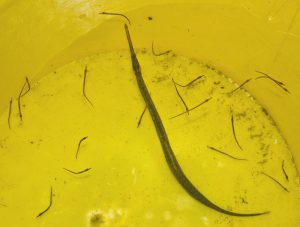 The oldest marine biology station in the world, known for its outreach to the public, is currently renovating. It’s aim is to display various underwater habitats, one of which is the seagrasses and their associated species: the Syngnathidae.
The oldest marine biology station in the world, known for its outreach to the public, is currently renovating. It’s aim is to display various underwater habitats, one of which is the seagrasses and their associated species: the Syngnathidae.
The Octopus Foundation decided to support the Concarneau antenna by creating several outreach tools (photos, videos, drawings…), all based on the experiences led by Patrick Louisy’s team. They will later be displayed in the Marinarium.
Furthermore, funds allocated by the Foundation will help the Marinarium of Concarneau to renovate the aquarium where species of seagrass, seahorses and other Syngnathidae are kept. The exposition will evolve along the results of the SYNTESE scientific program.
The Marinarium will also work alongside the Peau-Bleue association in order to create a breeding program of seahorses. The objective is to lower the sampling in the wild to the strict minimum.
Media for the public
In addition to this financial and technical support to the Peau-Bleue association and to the Marinarium of Concarneau, the Octopus Foundation will develop mainstream medias so that these iconic species will soon be better understood. These medias will also help to understand the seahorses and Syngnathidae’s behavior, biology, the threats they are facing and what solutions can be developed to help them thrive in their natural habitat.
In order to better study and understand the animals of this project, the Octopus Foundation developed new tools that will help the Peau-Bleue association and the Marinarium of Concarneau.
The aim is to use available technology, in this case sports camera (GoPro) and aerial drones (DJI), and adapt them to the necessities of the SYNTESE scientific program to study populations of seahorses and more generally the family of Syngnathidae.
Cameras
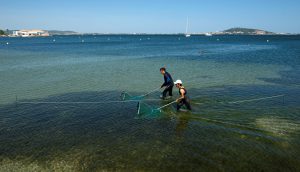 The GoPro camera are fixed to a prototype of pushnet called a haveneau. These prototype-nets are used on foot to capture the small marine animals that live in the seagrass beds. The images captured with the cameras will help to validate the effectiveness of these nets, and will be used in an educational video to be projected at the Marinarium in Concarneau.
The GoPro camera are fixed to a prototype of pushnet called a haveneau. These prototype-nets are used on foot to capture the small marine animals that live in the seagrass beds. The images captured with the cameras will help to validate the effectiveness of these nets, and will be used in an educational video to be projected at the Marinarium in Concarneau.
The nets are pushed on a 10 meter long transect. The caught animals are brought back on land to be sorted out, identified, measured before being released where they belong.
Drones
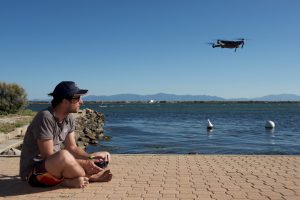 The drones developed by DJI are used to visualize, from the sky, the seagrass beds in which seahorses live. The images will be used to map the habitats of these iconic fish.
The drones developed by DJI are used to visualize, from the sky, the seagrass beds in which seahorses live. The images will be used to map the habitats of these iconic fish.
Orthophotoplan
The aerial photos acquired with our drones are some of our key tools for the exploration and scientific study of our seas and oceans.
The computer program processes the photos to extract a scientific tool: the orthophotoplan. From a vertical projection of the whole of the relief on a horizontal plan, this precise map respects all the real scales.
“The Seahorse Mystery” (2019 – 25min documentary on YouTube)
The following documentary presents the most recent state of knowledge on the populations of seahorses in France, and more generally in Europe. We followed Patrick Louisy, French biologist who works from Agde, and focused his research since 2005 on the seahorses of this stretch of coast. The Octopus Foundation and partners support the study of this emblematic fish that remains a mystery to science.
The documentary (in French with English subtitles) was filmed and edited by Dude Presse with the Octopus Foundation (2019)
Seahorses of France, a hidden treasure (2018)
Diving in the Bassin d’Arcachon (2017)
Follow the Octopus Foundation’s team of divers, as they scout the waters of the Bassin d’Arcachon looking for seahorses and other fascinating animals.
You’ll agree it’s not an easy task to find these fish that are masters of disguise.

